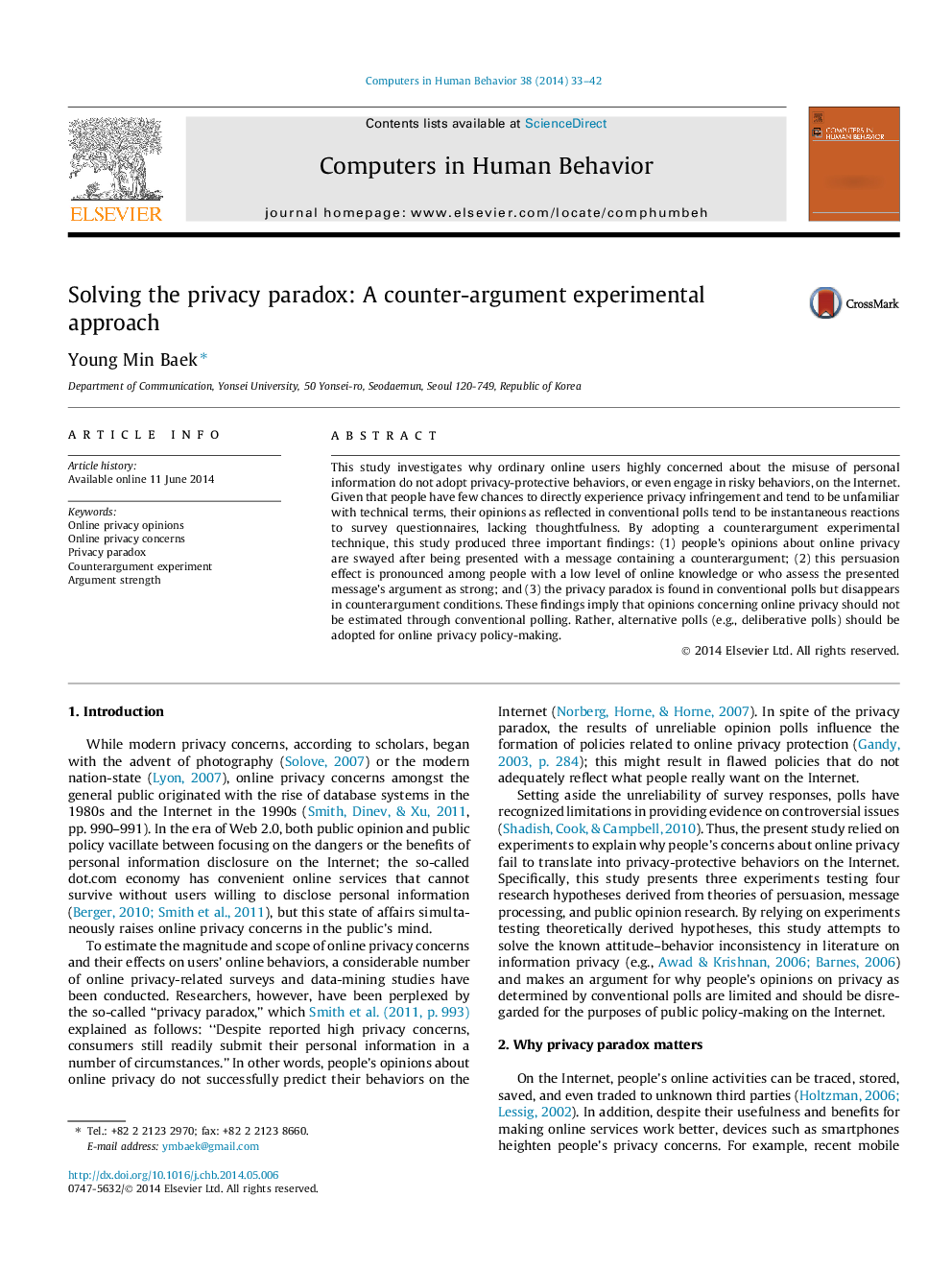| کد مقاله | کد نشریه | سال انتشار | مقاله انگلیسی | نسخه تمام متن |
|---|---|---|---|---|
| 350610 | 618454 | 2014 | 10 صفحه PDF | دانلود رایگان |
• Initial online privacy opinions are easily swayed by their counterarguments.
• The opinions of less knowledgeable people are more easily swayed.
• The counterargument’s persuasiveness is pronounced, if it is evaluated as strong.
• Alternative polling methods are necessary to obtain people’s stable privacy opinions.
This study investigates why ordinary online users highly concerned about the misuse of personal information do not adopt privacy-protective behaviors, or even engage in risky behaviors, on the Internet. Given that people have few chances to directly experience privacy infringement and tend to be unfamiliar with technical terms, their opinions as reflected in conventional polls tend to be instantaneous reactions to survey questionnaires, lacking thoughtfulness. By adopting a counterargument experimental technique, this study produced three important findings: (1) people’s opinions about online privacy are swayed after being presented with a message containing a counterargument; (2) this persuasion effect is pronounced among people with a low level of online knowledge or who assess the presented message’s argument as strong; and (3) the privacy paradox is found in conventional polls but disappears in counterargument conditions. These findings imply that opinions concerning online privacy should not be estimated through conventional polling. Rather, alternative polls (e.g., deliberative polls) should be adopted for online privacy policy-making.
Journal: Computers in Human Behavior - Volume 38, September 2014, Pages 33–42
